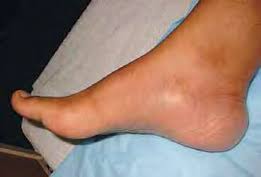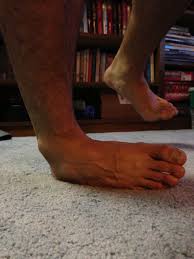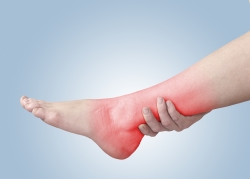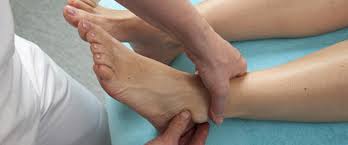
The ankle is that one unique body part that balances us, carries our whole-body weight, and makes our movement flexible and easy while dancing. So, for the best support of our body, our ankles need to be taken care of all the time.
Obviously, with a damaged ankle, you will not be able to perform any kind of dance or other physical activity that involves the movement of your legs.
Especially when you dance, you jump a lot, and for this reason, your ankles are at high risk of getting injuries like Achilles tendinitis, ankle sprains, shin splints, and heel spurs.
Also, the ligaments attached to the ankles can get ruptured or stretched too much due to the extreme pressure put on them, which creates tension and ultimately leads to inflexibility and extreme pain.
5 Ways for Dancers to Make Their Ankles Stronger
As a dancer—whether at the beginner stage or advancing professionally—you cannot afford to overlook ankle strength.
Strong, flexible ankles provide the foundation for balance, precision, and injury prevention, all of which are crucial for long-term success in dance.
To support you, I’ve outlined the five most effective ways and ankle exercises for dancers, carefully chosen to enhance strength, stability, and resilience in your training and performances…
1- Warm up before dancing
Warming up is an essential part of any activity. You cannot just get out of bed and start your Ballet, Salsa, or Tango.
Your body needs some advance notice that it is about to go through a rigorous workout. Warming up helps in preparing your body for a dance activity that you want to take.
You can warm up your ankles and the muscles in the lower leg by trying to draw each letter of the English alphabet series with your foot. This can be done anywhere you want. This helps to increase the blood flow to the muscles of the lower leg area.
2- Learn the art of balancing
Warming up isn’t just about preparing your body—it’s a powerful way to protect your ankles from injuries while also improving overall health. In fact, certain warm-up methods actively build ankle strength and stability.
A simple yet highly effective technique is practicing balance. Start by standing on one foot for about a minute, then switch to the other leg. This small exercise reveals how steady your posture really is and gradually trains your ankles to support you better.
Balancing exercises are especially beneficial for dancers, as they not only strengthen the ankles but also improve body control—crucial for styles like Tap dance, Kathak, and Bharatnatyam. Plus, they’re a great way to develop stronger feet and ankles for highly demanding forms such as Ballet.
3- Do the scarf exercise
Scarf exercise is a very unique and healthy way to increase the strength of your ankles as a dancer.
You need to scatter a scarf on the floor and then place your foot in it. Then try to grab the scarf through your toes and pull it inward towards your heel until you reach the end of the scarf.
Reverse the direction by starting inward and then taking the scarf outward. By performing it in both directions with both feet, you can strengthen your ankles in a faster way.
You can repeat this exercise fifteen to twenty times with both legs.
4- Wear ankle straps or braces
Ankle straps, supports, and braces aren’t just accessories; they’re game-changers. By evenly distributing the pressure from intense movements, ankle braces for dancers provide unmatched stability and safeguard your foot arches and joints.
If you’ve ever struggled with ankle pain or had an injury before, wearing ankle supports isn’t optional—it’s essential. They not only relieve pressure but also give you the confidence to perform without fear of setbacks. Think of them as your personal insurance policy for a stronger, injury-free dance career.
And here’s a pro tip: if you want to go beyond protection and actually strengthen your ankles, try adding ankle weights to your routine.
Training with ankle weights builds endurance, improves control, and helps you achieve the kind of powerful, graceful movements every dancer dreams of. The best part is they’re inexpensive, easy to find online, and one of the smartest investments you can make for your dancing journey.
5- Keep a check on your weight
The more the weight of your body, the higher the pressure on your ankles, which will make them more fragile.
In fact, if too much weight is put on your ankles, the ligaments can get damaged, causing inflexibility with pain. In this condition, you will not be able to play or dance for long without experiencing any pain in your ankles.
As a dancer, it is therefore essential for you to keep a check on what you eat and how you eat.
Of course, it is not a hard and fast rule to do that, but if you want stronger ankles without any injuries on them, make sure that your body weight is in check.
As a dancing student, if you think you are a bit obese, it is good to also indulge yourself in some basic exercises like running, yoga, etc.
Can Too Much Dancing Cause Ankle Injuries in Dancers?
Yes, it absolutely can—especially if you’re dancing intensively without proper protection and support.
Dance classes often involve sudden twists, quick turns, and powerful directional changes. While these movements look graceful, they can put enormous stress on your ankles and feet, leading to strain, heel pain, or even fractures in severe cases.
Ballet dancers, for example, often experience toe pain and fractures from the constant pressure of pointe shoes. Without the right protection, even the most skilled dancer is vulnerable.
The good news is that prevention is simple. Wearing the right ankle brace, compression socks, and dance-specific shoes can protect your ankles, feet, and toes from unnecessary strain.
Not only do these supports reduce the risk of injury, but they also improve your stability and performance—helping you dance longer, safer, and more confidently. And of course, when your feet feel strong, your audience feels the magic.
What are Some Other Common Injuries Dancers Should Watch Out For?
While ankle and foot injuries are the most common, they’re not the only problem areas.
For many, training sessions last several hours a day, and according to research, those who dance more than five hours daily face a much higher risk of overuse injuries, stress fractures, and joint problems.
Here are a few other body parts that often suffer:
Hips
The hip joint plays a huge role in dance, especially for movements that involve extensions, rotations, and flexibility. Overuse or incorrect technique can lead to conditions like hip impingement, labral tears, or chronic tendonitis. Dancers often report hip pain when pushing beyond their natural range of motion.
Knees
Because dance involves constant bending, jumping, and turning, knees take on a lot of repetitive stress. This makes dancers prone to patellar tendonitis (jumper’s knee), ligament strains, and even meniscus injuries. Poor landing technique or lack of muscle support around the joint can make these injuries worse.
Lower Back
Back pain is also common, particularly in styles that require strong back flexibility, like ballet or contemporary. Repeated arching, twisting, and lifting can strain the lower back muscles or lead to conditions such as stress fractures in the spine (spondylolysis). Weak core strength often makes this problem worse.
Long-Term Risks
Professional dancers, due to years of intense physical training, are also more likely to develop arthritis in weight-bearing joints such as the ankles, feet, knees, hips, and lower back. This is why prevention strategies—such as warming up properly, cross-training, and using supportive gear—are absolutely essential for maintaining longevity in dance.
The conclusion
Dancers are always at risk of getting injuries to their ankles and foot. However, the rate of injury is found to be lower than compared of athletes.
While completely preventing the injury may not be possible, proper nutrition and usage of protective gears for dancers can help a lot no matter what age they are. Hopefully, following the above tips will also help you a lot to prevent injuries often.




